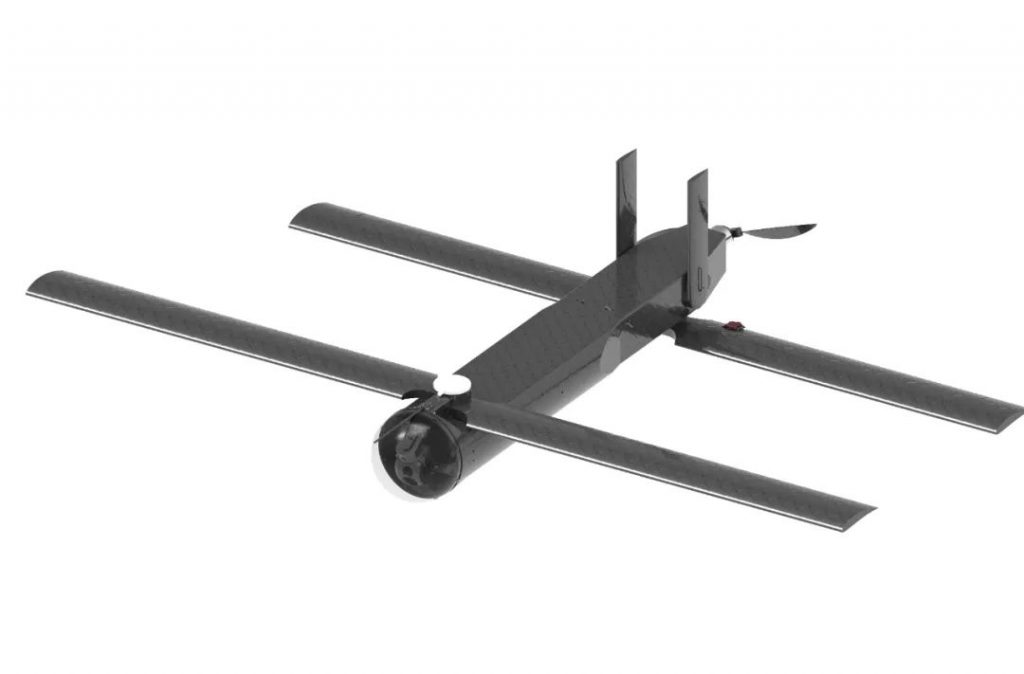Reconnaissance and strike integrated cruiser Leave a comment

With the development of UAV technology, militaries around the world are equipped with a large number of UAVs for battlefield reconnaissance. These UAVs can be launched using the rails on the armored vehicles. After searching and locating enemy targets, long-range artillery can be called. Or aviation strikes. Damage assessment can also be performed after the blow, whether to perform a second supplementary blow. But what to do if there is a target out of range of artillery fire, or if aviation support is not in place?
Warplanes are fleeting in the modern battlefield. So the concept of cruise missiles came into being. The concept is to combine small long-term cruise UAVs and missiles with explosive warheads. It can be reused many times, monitor a large battlefield for a long time, and can launch an attack on its own after finding the target, destroying the target at the first time. Technically speaking, the development of cruise missiles is not difficult, mainly to ensure long-term cruise and recovery, as well as the accuracy of infrared or TV seekers. The most important thing is that the cost of cruise missiles needs to be controlled. If it is too expensive, it will lose its value for money.
The cruiser adopts a tandem-wing layout, considering aerodynamic efficiency and making full use of space, choosing a front-up, rear-down tandem-wing layout, a double vertical tail on the top, and a tail propulsion layout.
The take-off weight of the whole machine is 8.6kg. Under the size of 1 meter long, the cruising speed can reach 28m/s, the endurance time can reach 80min, and the cruising altitude can reach the range of 100~1000 meters. The launch method adopts mature and reliable catapult launch. , Parachute recovery is adopted during recovery, the control radius of the whole machine can reach 30km, and it is equipped with two-axis gimbal for bidirectional stabilization.
When working, the FD-820 rover is equipped with an IND80 tactical-grade miniature seeker, which uses an 8mm fixed-focus visible light movement and an 18mm uncooled infrared thermal imager, and weighs only about 280g. The interior adopts two axes and two frames, and integrates high-precision electronic image stabilization technology, which can not only improve the accuracy, but also increase the reliability of the system. At the same time, the pod integrates a target tracking module, which can realize real-time positioning and tracking of dynamic targets such as people/vehicles. Based on the seeker and relying on AI technology, the FD-820 cruising missile can automatically identify and strike targets.
FlyDragon Aviation can provide two kinds of cruiser coordination solutions. The first solution is the multi-rotor reconnaissance + cruise missile coordinated strike solution, which is suitable for low-altitude reconnaissance. After autonomously identifying the target, it locates the target, and the position information will be sent directly to the cruise missile cluster. , the cruising missile cluster will fly to the target to strike. ; Scheme 2: The cooperative reconnaissance and strike scheme of cruising missile clusters is suitable for covert reconnaissance and raids on mid- and high-altitude targets.

At present, the cluster collaborative experiment of 3 machines, 8 machines, 15 machines and 30 machines has been completed. It has the capabilities of cluster formation transformation, autonomous mission planning, online route planning, regional target cluster search, and simulated autonomous strikes.

At present, the cruiser has several main launch methods: catapult, single-tube launch, vehicle-mounted multi-tube launch, and airdrop. The three launch methods of catapult, single-tube launch, and vehicle-mounted multi-tube launch are relatively low in difficulty and have high maturity. At present, many units in the industry have overcome these technologies; cruise missile airdrop is a mainstream direction for future development. The advantage is that it can be deployed quickly and can be quickly deployed across domains. In the next 2-3 years, Inno Technology will develop the cruising missile cluster airdrop technology based on the existing technology, which will greatly improve the battlefield applicability of the cruising missile system.
